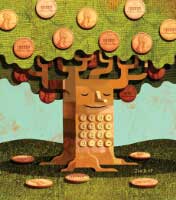Why Do Your Breasts Hurt So Much? TheYearOfTheB
Post# of 223

TheYearOfTheBoob.com generates awareness for a seldom-discussed women's health issue, encouraging women to stop putting up with "PMS breasts"
MENLO PARK, Calif., April 6, 2016 /PRNewswire/ -- The facts are eye-opening at best and shocking at worst: Every month, 72% of women suffer sore, achy breasts with their menstrual cycles1 according to a survey conducted on behalf of BioPharmX. Some are not able to exercise, be intimate with their partners, or even hug their children due to the discomfort. Yet, 45% of these women do not seek a solution from their doctors because they think that breast tenderness "is simply part of being a woman."2
To shed light on the problem of monthly breast discomfort (or "PMS breasts"
For many women, PMS breasts are linked to the hormonal fluctuations of their menstrual cycle. For others, the culprit is the otherwise benign fibrocystic breast condition (FBC). The result is the same: For several days or even weeks every month, women are forced to compromise their regular routines, including missing exercise, school and/or work; for some, the discomfort is so bad, they are unable to hug their children and/or be intimate with their partners.
Ellen Williams of Bricktown, New Jersey quit playing volleyball, stopped going on runs, hated the idea of having to walk up or down stairs and wouldn't let her boyfriend near her breasts during "that time of the month." Despite her fit physique, she wore baggy clothes or sweatshirts all the time because she didn't even want to think about her breasts.
"These conditions affect millions of women, yet very few specifically ask about ways to treat the problem at its source—most women view the discomfort as a normal occurrence that they simply have to accept," explains Dr. Lee Shulman, OBGYN at the Feinberg School of Medicine. "By taking Violet iodine every day millions of women need not suffer from the severe breast tenderness that comes with a woman's menstrual cycle."
Violet iodine—a non-hormone supplement that is available without a prescription—is created using a novel technology that combines a patented formulation of two forms of iodine: iodide and iodate. This unique formulation interacts with the acidic pH environment of the stomach to form molecular iodine, which is then delivered directly to breast tissue, resulting in a reduction of menstrual-related breast discomfort. Until now, there has never been a supplement demonstrated to target breast tissue, making Violet iodine the first iodine supplement to address the underlying cause of menstrual-related breast symptoms.
Ellen Williams' doctor recommended that she try molecular iodine. Now, Ellen is back on the volleyball court and back to her running routine. As Ellen explains, "Sometimes I forget how much the [molecular] iodine is helping me until I forget to take it. Just a few days without it, and I really feel the pain again."3
About Violet® iodine
Violet iodine is produced by BioPharmX, a specialty pharmaceutical company that seeks to provide products through proprietary platform technologies for prescription, over-the-counter and supplement applications in the health and wellness markets, including dermatology and women's health.
1 This survey was conducted online within the United States by Harris Poll on behalf of BioPharmX from January 7-11, 2016 among 582 adult women ages 18-49.
2 This survey was conducted online within the United States by Harris Poll on behalf of BioPharmX from July 31-August 5, 2015 among 985 adult women ages 25 and older.
3 Individual results may vary. Some women experience relief with their first menstrual cycle, however, initial symptom relief may take 60 days or longer."
SOURCE BioPharmX
For further information: Nina Brauer, nbrauer@biopharmx.com, (650) 889-5030
 (0)
(0) (0)
(0)